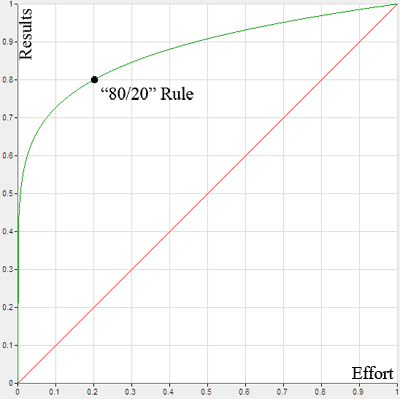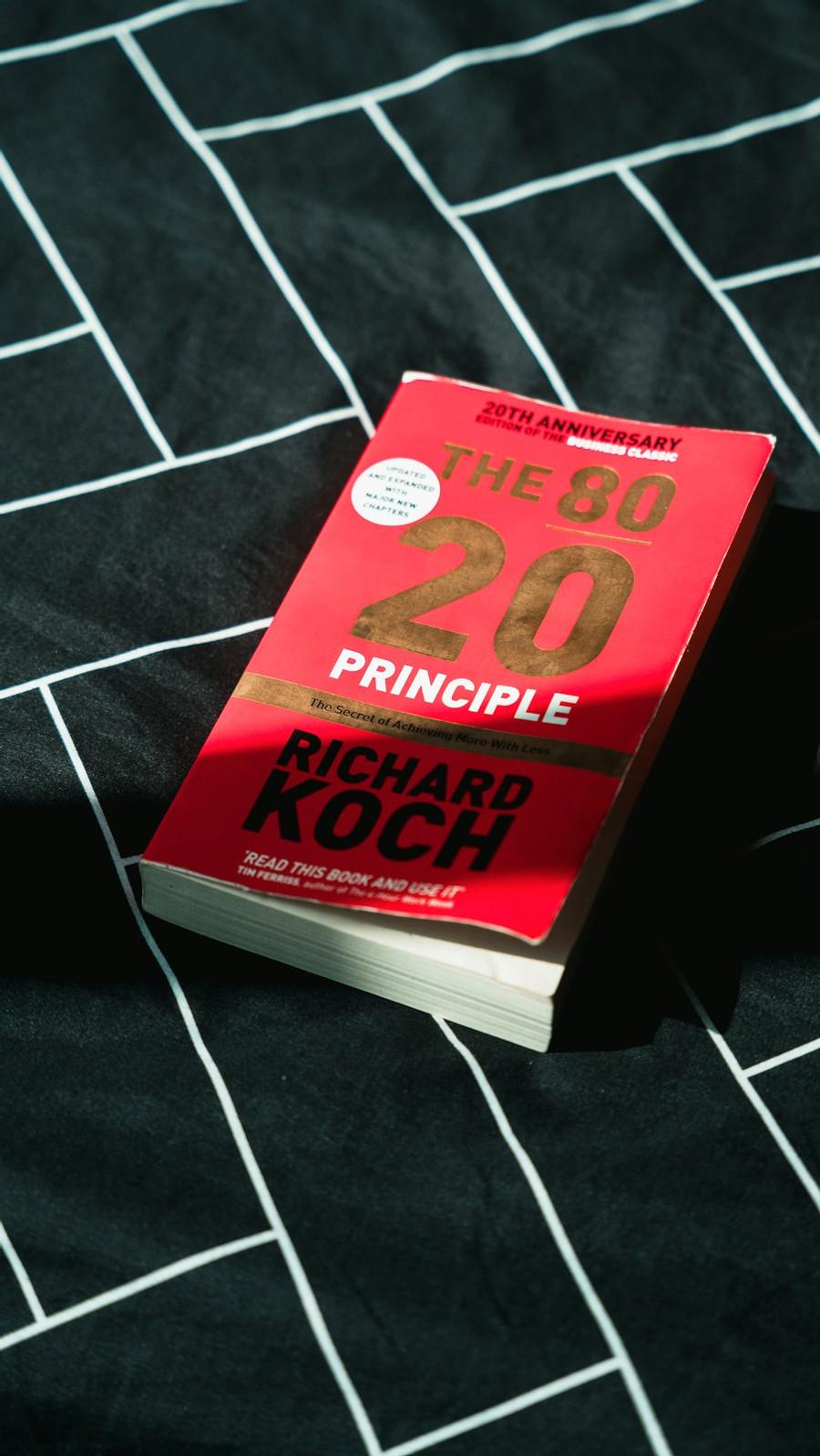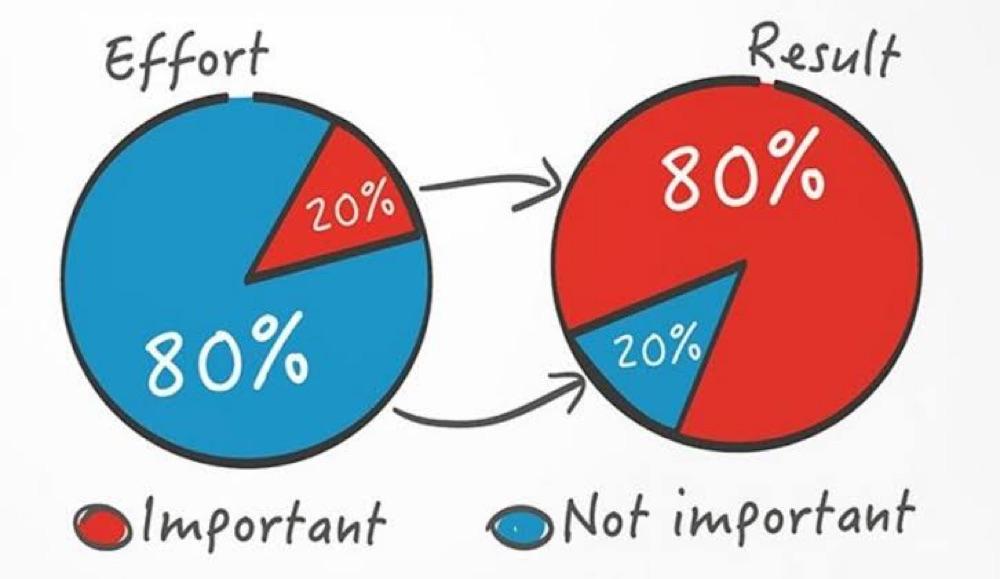Understanding the Pareto Principle (The 80/20 Rule)
Curated from: betterexplained.com
Ideas, facts & insights covering these topics:
6 ideas
·5.41K reads
73
5
Explore the World's Best Ideas
Join today and uncover 100+ curated journeys from 50+ topics. Unlock access to our mobile app with extensive features.
History Of Pareto Principle.
The Pareto Principle referred to the observation that 80% of Italy’s wealth belonged to only 20% of the population.
47
1.06K reads
Pareto Principle is the observation, not law.
It can mean all of the following things:
- 20% of the input creates 80% of the result.
- 20% of the workers produce 80% of the result.
- 20% of the customers create 80% of the revenue.
59
961 reads
But First, Don’t Get Twisted.
There’s a common misconception that the numbers 20 and 80 must add to 100 — they don’t!
- 20% of the workers could create 10% of the result. Or 50%. Or 80%. Or 99%, or even 100%.
- In a group of 100 workers, 20 could do all the work while the other 80 goof off. In that case, 20% of the workers did 100% of the work.
Remember that the 80/20 rule is a rough guide about typical distributions.
The key point is that most things in life (effort, reward, output) are not distributed evenly — some contribute more than others.
54
876 reads
So Why Is This Useful?
The Pareto Principle helps you realize that the majority of results come from a minority of inputs.
The point is to realize that you can often focus your effort on the 20% that makes a difference, instead of the 80% that doesn’t add much.
62
872 reads
This may not be the best strategy in every case
The point of the Pareto principle is to recognize that most things in life are not distributed evenly.
Make decisions on allocating time, resources and effort based on this:
- Instead of spending 1 hour drafting a paper you’re not sure is needed, spend 10 minutes thinking of ideas. Then spend 50 minutes writing about the best one.
- Instead of agonizing 3 hours on a single design, make 6 layouts (30 minutes each) and pick your favorite.
53
795 reads
When you are seeking top quality, you need all 100%!
It may be true that 80% of the Mona Lisa was painted in the first 20% of the time, but it wouldn’t be the masterpiece it is without all the details.
51
852 reads
IDEAS CURATED BY
A junior reader who enjoy topics that advocate for self-improvement. Also a proponent of healthy living and mindfulness (still learning). Let’s connect and explore the world of books together!
CURATOR'S NOTE
Time management and making priorities might be painful and these might be blockers to your success. The Pareto Principle might give you the refreshers as a new perspective.
“
Kautsar Ikrami's ideas are part of this journey:
Learn more about strategy with this collection
Understanding the importance of decision-making
Identifying biases that affect decision-making
Analyzing the potential outcomes of a decision
Related collections
Similar ideas
Read & Learn
20x Faster
without
deepstash
with
deepstash
with
deepstash
Personalized microlearning
—
100+ Learning Journeys
—
Access to 200,000+ ideas
—
Access to the mobile app
—
Unlimited idea saving
—
—
Unlimited history
—
—
Unlimited listening to ideas
—
—
Downloading & offline access
—
—
Supercharge your mind with one idea per day
Enter your email and spend 1 minute every day to learn something new.
I agree to receive email updates






